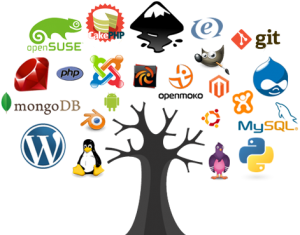To Open Source or Not to Open Source: A Comprehensive Analysis
— June 4, 2015This post originally appeared on LinkedIn’s engineering blog.
Open source software has evolved from addressing small, niche problems to becoming a driving force behind some of the most influential technology companies worldwide. This shift underscores the need for businesses and developers to critically examine the merits and challenges of embracing open source. Below, we delve deeply into the reasons for and against open sourcing, the lessons learned from real-world examples, and actionable insights on building successful open source programs.
Why Companies Should Embrace Open Source
Improving Software Quality and Developer Growth
One of the most significant advantages of open source is its potential to enhance the quality of software development. Developers naturally produce better work when they know their code will be publicly scrutinized. This happens because open source exposes developers to a community that values clarity, functionality, and robust testing. Unlike internal projects, where teams may skip documentation or cut corners, open source requires meticulous attention to detail. Code that lacks readability or proper testing will fail to gain traction in an open-source community, where choices are abundant, and alternatives are readily available.
Additionally, open source attaches a developer’s name to their work, which creates a strong incentive for excellence. A developer’s professional reputation often hinges on the quality of their contributions, prompting them to adopt best practices. From clean design to thorough documentation, the visibility of open-source projects instills a discipline that internal-only projects often lack.
Beyond immediate quality improvements, open source accelerates professional growth. Developers learn to navigate broader community input, analyze trends, and incorporate valuable feedback. When leading or maintaining an open-source project, developers gain experience in collaboration, conflict resolution, and technical leadership. Managing contributions from diverse participants hones critical decision-making skills, such as determining which changes to integrate and which to reject. These opportunities prepare engineers for leadership roles and foster continuous learning.
Enhancing a Company’s Engineering Brand
For companies, open source serves as a powerful tool for building an engineering brand. Sharing projects with the wider developer community showcases a company’s technical expertise, innovation, and commitment to the industry. By releasing open-source tools or frameworks, organizations demonstrate their willingness to contribute beyond their walls. This positions them as leaders and attracts top talent, particularly engineers who value openness and collaboration.
Open-source projects also serve as recruitment assets. Prospective employees can review these projects to gauge the company’s technological capabilities and culture. Offering engineers the opportunity to work on open source signals that the organization values skill development and career growth. Furthermore, it reduces barriers for candidates by allowing them to familiarize themselves with the company’s technology stack before joining, fostering confidence and engagement.
The Case Against Open Source
While the benefits are compelling, open source is not universally advantageous. Companies must carefully evaluate their goals and resources before deciding to release projects publicly.
Avoid Open Sourcing as a Shortcut for Resources
A common misconception is that open-sourcing a project will attract external contributors who will shoulder the workload. While some projects do gain widespread community support, this is rare and often unpredictable. Most open-source initiatives require significant time and effort to manage. Contributions from the community may not align with the organization’s needs, leading to additional work in filtering or modifying submissions. On the other hand, projects that fail to gain traction waste the time spent preparing them for release.
Moreover, relying on external developers introduces risks. Companies have no control over the quality of external contributions, and integrating subpar code can introduce vulnerabilities or technical debt. Thus, open source should never be viewed as a shortcut to scale a project.
Open Source Only When It Adds Value
Another pitfall is open-sourcing projects without a clear rationale. Companies should first investigate whether existing open-source solutions address the same problem. If alternatives exist, contributing to or improving those projects often yields better results than duplicating efforts. Releasing a subpar solution risks damaging a company’s reputation, as developers may question the decision to release inferior work when better options are available.
Lessons from Building Open Source Programs
Maintenance Is Key
Simply releasing a project into the community does not guarantee its success. Companies must commit to maintaining and improving their open-source projects to ensure their growth. Neglecting maintenance often leads to stagnation, where even promising projects lose relevance and community interest.
LinkedIn’s experience illustrates this lesson. In its early open-source efforts, the company released search components built on top of Lucene but failed to integrate closely with the existing Lucene community. These projects struggled to gain traction because they operated in isolation. In contrast, when LinkedIn later developed Kafka, it actively invested in its development and nurtured a vibrant community, turning it into a widely adopted tool.
Leverage Existing Communities
Integrating smaller projects into larger, established open-source initiatives often yields better results than maintaining standalone projects. Established communities bring built-in user bases, contributors, and visibility, which significantly increase a project’s chances of success. For instance, contributing extensions to an Apache project often proves more impactful than releasing a new standalone project.
Be Prepared to Fork Projects
Forking a project can be a challenging but necessary decision. Once a project is open-sourced, it evolves independently of its original creator. Over time, the community may take the project in directions that no longer align with the company’s goals or technical requirements. In such cases, forking—creating a separate version of the project—becomes essential. While this might feel like abandoning the original vision, it reflects the natural lifecycle of open-source projects. Companies must accept this possibility and plan accordingly.
Conclusion
Open source offers significant advantages for developers and companies, from improving software quality to enhancing engineering brands. However, it also comes with challenges, including the need for long-term commitment and careful project selection. Companies considering open sourcing must weigh these factors carefully to determine whether it aligns with their strategic goals.
For businesses, particularly in software outsourcing hubs like Vietnam, open source represents an opportunity to demonstrate expertise, contribute to global innovation, and attract skilled engineers. However, success requires thoughtful planning, active participation, and a commitment to the ongoing development of open-source initiatives. By learning from past experiences and adopting best practices, companies can maximize the benefits of open source while avoiding common pitfalls.






